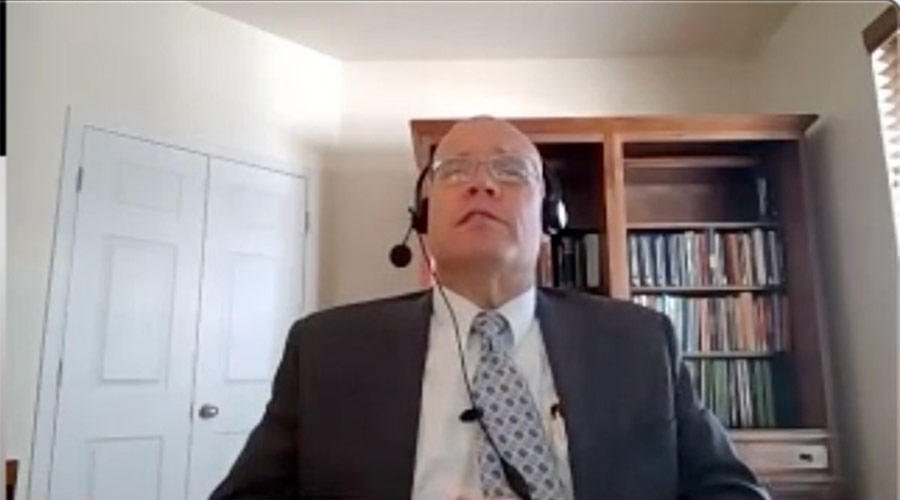Checking in on TTCI and ongoing R&D
3/8/2021
By Jeff Stagl, Managing Editor
The Transportation Technology Center Inc. (TTCI) in Pueblo, Colorado, is the epicenter of research and development activities in North America. Owned by the U.S. Department of Transportation and operated on behalf of the Federal Railroad Administration (FRA) as a subsidiary of the Association of American Railroads, TTCI tests and analyzes all types of freight and passenger rolling stock, vehicles, track components and safety devices.
During his presentation at Progressive Railroading’s Rail Summit: Technology Advancement webinar on Feb. 17, TTCI Senior Assistant Vice President of Research and Development Gary Fry provided an overview of the facility and shared some of its R&D endeavors.
Overall, the 52-square-mile center provides testing, consulting, training, research and technical services. It employs more than 300 full- and part-time employees from over 16 countries, features more than 48 miles of specialized test tracks, including a high-tonnage loop, and houses the Security & Emergency Response Training Center.
TTCI’s objectives include testing and root cause analysis, and prediction and detection functions for various rail components, which are studied in a fatigue environment.
“We look at the microscopic response of rail … and wheel/rail interface optimization,” said Fry.
TTCI’s R&D work includes continually enhancing and upgrading the NUCARS® vehicle/track interaction multi-body simulation program, which first was introduced in 1989. The computational modeling software is designed to analyze existing and new vehicle full-body models faster than finite element analysis, and help address vehicle dynamics issues.
The software’s flexible interface helps users visualize their models for freight or passenger cars, locomotives, light-rail vehicles or high-speed trains. Recent improvements and upgrades include advanced user interfaces and 3D viewing of the models.
“NUCARS includes an integrated suite of programs for developing inputs, performing simulations and analyzing results,” said Fry. “It can identify the root causes of performance problems.”
Another R&D project targets the root causes of rolling contact fatigue. The center employs a simulator — one of only a few of its kind in the world — to estimate and analyze loads on rails and wheels, said Fry. The geometry of rail and resultant wheel forces are studied.
“We look for damage on the surface of rail, and look at rail performance and integrity,” said Fry. “There can be different types of wear.”
Meanwhile, an ongoing tie and fastener system performance project is designed to take a hard look at the entire load environment, he said. Spikes featuring sensing capabilities and strain gages are used during analyses while trains operate both at TTCI and in revenue service.
“We are looking for improved tie plates and fastening systems,” said Fry.
Bridge loads and potential fatigue are the focus of an ongoing steel bridge service fitness assessment. A riveted steel bridge that was installed at the center affords the opportunity to study fatigue of both short and long spans, said Fry. Although the bridge is more than 100 years old, it has no significant cracks or damage, he added.
Fry also reviewed some ongoing rail inspection technologies that are under analysis at TTCI. For example, prototype testing is underway on a handheld phased array ultrasonic testing approach for rail weld inspections. In addition, the center is assessing laser ultrasonic techniques for rail base inspections.
Ultimately, the center’s R&D activities are helping with advancements in various components, materials and systems, said Fry. TTCI’s partnerships with the FRA, railroads and suppliers are essential to the success of its R&D programs, he added.

